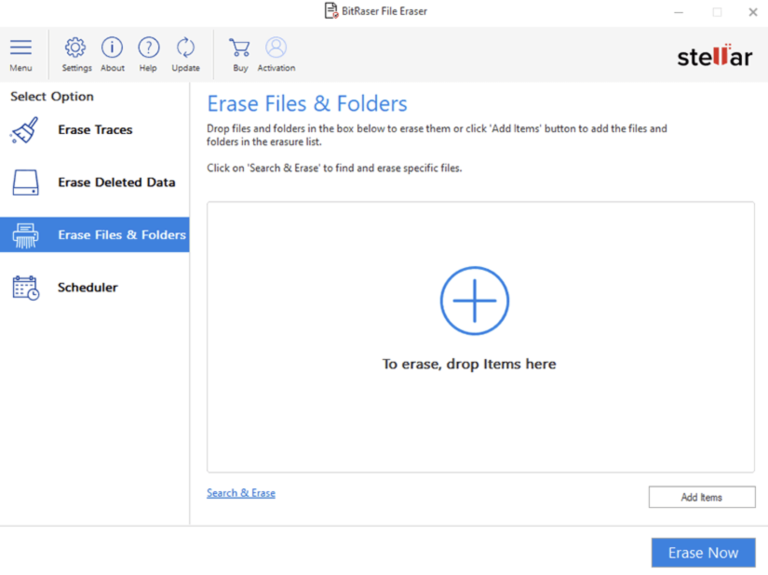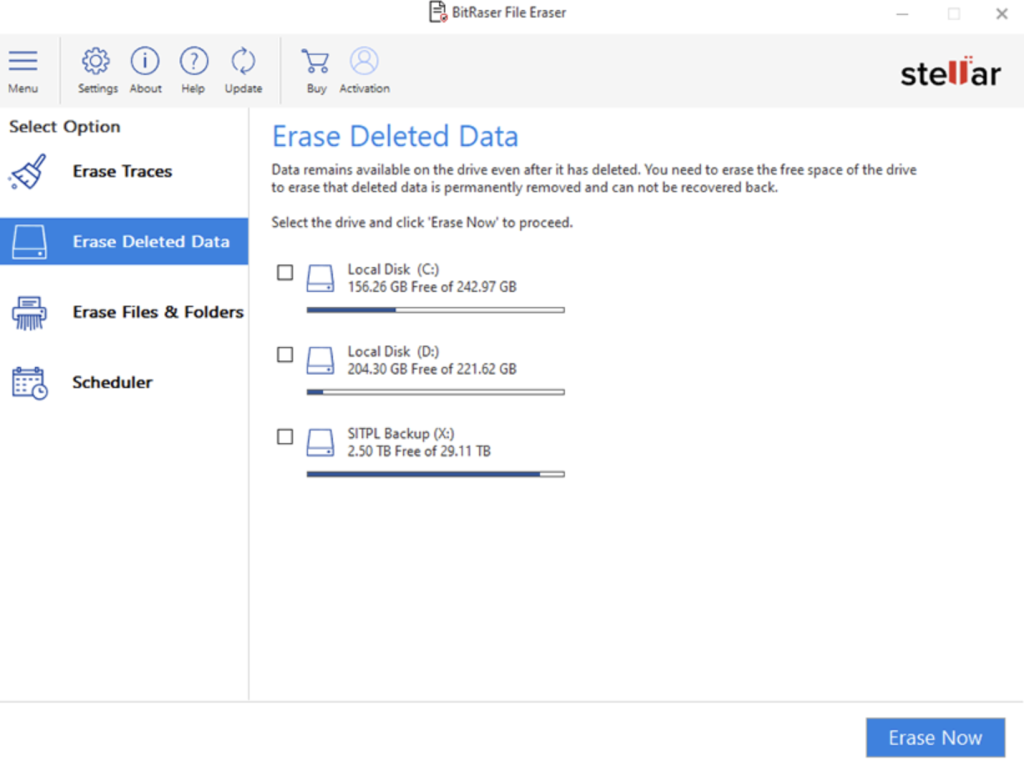We have files that we want to get rid of most of the time so that nothing is left behind permanently. Now you can do it with the assistance of a software called Bitraser File eraser by Stellar info. In this era of technology, our data is very precious, and we cannot rely on the simple delete key. This default delete option gets rid of the logical reference that is available on your hard drive. There is still a chance of your files being recovered by using any recovery software. This unsecured data can be a potential threat to anyone’s security.
Through this data out there, you cannot be safe as there are multiple ways that people can track you through the web browsing history, downloaded files, cookies, and much more. This data leakage can lead to the disruption of privacy. That is why you need Bitraser File Eraser software. It is an excellent app that can delete every file on your hard drive without any remaining trace. If you want to know more about this amazing software, keep on reading.
What Is a Bitraser File Eraser, and why is it used?
Bitraser File eraser is a file wiping software that is secure and helps you to erase confidential files, folders, volumes, saved login passwords, etc., permanently from your laptop’s desktops and servers. With the help of this software, you can altogether remove the files from existence, and there would be no way through which anyone could recover your data. This software is mainly used by enterprises that need to safeguard the data of their customers or employees, especially when they have to comply with laws like GDPR to prevent data breaches. These enterprises use this tool/software to meet legal obligations to delete personal data after ending contracts or services securely.
Features Of Bitraser File Eraser:
Bitraser comes with many advanced features that set it apart from other kinds of data erasers. Following are some of the features of Bitraser:
- Perfectly Erases files:
This software does not leave any space for the file to be recovered ever. It completely erases the files, folders, internet history, application traces, photos, videos, identity documents, etc. This software also provides its user to choose among the 3 standard international erasing algorithms.
- Delete chat Messages:
Several mediums used for messaging like yahoo, ICQ, or skype are used by businesses and for personal use worldwide. These chat applications are designed to store your chat data securely that can be retrieved anytime. However, with the help of a Bitraser File eraser, you can erase all the traces of data stored by these applications.
- Search data for Erasing:
The user interface of the Bitraser file eraser allows the users to search a file by the name or extension. Then its quick algorithm will instantly list the files you have searched and provide an option to select and delete the files from the list. It also has an option to set scheduled erasing tasks.
- Generate Erasure reports:
Bitraser also generates a data erasure certificate after successfully erasing the files in a pdf format. These reports are often used for various statutory and regulatory compliance.
- You need password to access bitraser:
Another great feature this software has is a password feature that only allows the primary user to have the software’s access and run it. It avoids unauthorized access and prevents others from using this software.
- Erase Internet Files:
Biteraser also has a feature that allows users to delete their browsing data, internet banking logins, email logins, saved cards, auto form fills data and all kinds of hidden internet history. This software supports opera, Mozilla, chrome, safari, edge, etc.
Final Thoughts:
The Bitraser File eraser may seem like all the other erasing apps, but it is much safer and advanced from them as it provides better data protection. It is a very user-friendly software and has unique and advanced tools. There are other files erasing software, but Bitraser, compared to them, assures that it will delete your data permanently. It uses world-class standards to erase the data so that it is never recovered and gives you a pdf certificate for the erasure of assurance.
Bitraser File Eraser is equipped with multiple algorithms and works well. It is effortless, not complicated, is highly user-friendly, and is a very effective and excellent data protection app. You just need to download and install the software, and then it is good to go. It provides you with a 30-day free trial. We would 100% recommend you invest in this app to erode confidential data from your devices correctly.















 Bitcoin
Bitcoin  Ethereum
Ethereum  Tether
Tether  XRP
XRP  USDC
USDC  TRON
TRON  Lido Staked Ether
Lido Staked Ether  Cardano
Cardano  Avalanche
Avalanche  Toncoin
Toncoin  Solana
Solana